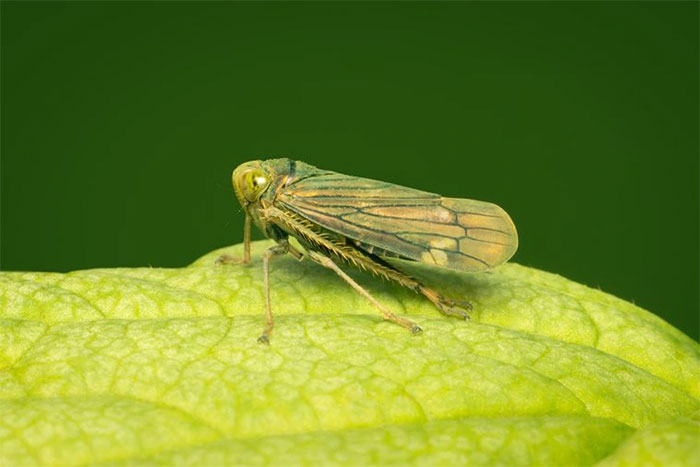Insects could inspire stealth technology
In science, even the smallest and seemingly insignificant creatures can create great technological innovations, like the hopper.
This insect appears everywhere around our lives, but it "shine" in its own very special way.
Specifically, they secrete mysterious little particles, called brochosomes , that give them solid protection in nature.
A new study from the University of Pennsylvania (USA) has discovered this fascinating natural armor. It paves the way for future stealth devices or next-generation technology.

Chafer beetles are the inspiration for scientists to create stealth technology. (Illustration photo: SP).
The secret of brochosomes
Scientists have known about brochosomes since the 1950s. These nanostructures are shaped like soccer balls, approximately 20μm in diameter, and have always intrigued researchers.
It took scientists from the University of Pennsylvania many years of research to understand the geometry, properties and applications of brochosomes in science and technology.
After creating a basic synthetic version of the brochosome in 2017, study author Professor Tak Sing Wong and his team achieved a remarkable feat: For the first time, they recreated a Extremely small models and complex structures thanks to 3D printing.
Explore for the future
This reveals an extraordinary trait. The research team explains: "Until now, it is not clearly understood why this insect produces particles with such a complex structure. Brochosomes created in the laboratory can reduce the Reflects light up to 94%.
This is an important discovery, for the first time we see how nature governs light in its own way."
The complex structure of brochosomes allows them to absorb both visible and ultraviolet light , promising many applications in nature.
This unique optical property allows leafhoppers to effectively escape predators, using a natural form of stealth. This insect can even escape the sight of birds and reptiles, thanks to brochosomes.
Great technological prospects
The team now wants to improve the process for producing synthetic brochosomes in the hope of getting closer to their actual size, which could lead to a technological revolution.
They allow scientists to perform unprecedented optical techniques. Creating low-bandwidth filters with very short wavelengths and complex geometries inspired by chafer beetles could lead to many future applications.
Some of these include making solar panels, pharmaceutical packaging, even more effective sunscreens.
Besides, it also helps scientists encode information, then only display it under certain light waves.
Researchers are also looking at developing invisibility cloaks or camouflage devices inspired directly by leafhoppers.
This can really help hide heat signatures from humans or machines. This research once again proves that nature is an endless source of creativity: "It is like a good teacher, helping us develop new materials.
In this study, we focused on just one species, but there are many other incredible insects in the world waiting to be discovered. They are not only creatures, but also a source of inspiration ," the group of scientists expressed hope.
- What is stealth technology? How does it work?
- China's 'cheap' stealth technology can outmaneuver military radar systems
- Stealth technology through the lens
- Successfully making stealth material can make the person behind it disappear!
- June 18: The world's first stealth plane to test flight
- Decoding technology that can 'erase' the stealth of submarines: The most modern in the world?
- Materials help fight the shape of the chameleon
- Bend light brings breakthroughs in stealth technology
- America shows off a stealthy flagship bearing the nickname 'ghost'
- Will Russia have stealth troops in the future?
- People are about to possess the ability to 'stealth'?
- China developed an invisibility cloak
 Why do potatoes have eyes?
Why do potatoes have eyes? 'Tragedy' the world's largest carnivorous life: Death becomes ... public toilet
'Tragedy' the world's largest carnivorous life: Death becomes ... public toilet Tomatoes were once considered 'poisonous' for 200 years
Tomatoes were once considered 'poisonous' for 200 years Detecting microscopic parasites on human face
Detecting microscopic parasites on human face